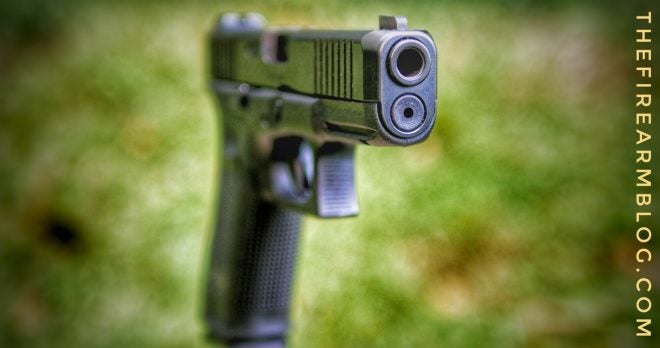Even though I started writing this column days ago, apparently Wednesday was National Situational Awareness Day. So much for my digital self-awareness. But the timing couldn’t be better: The US Concealed Carry Association (USCCA) dropped a hypothetical restaurant layout on their Facebook page a few days ago, asking their readers to pick their preferred seat and why. The idea may be overly simplistic, but anything that helps people literally open their eyes is probably worthy of a discussion.

Credit: USCCA.org
So, looking at the above floor plan, what seat would you pick and why?
Not to worry, I won’t be using terms like ‘sheep’, ‘woke’ or ‘head-on-a-swivel’. But instead of talking purely about guns or gear on this week’s edition of Concealed Carry Corner, I thought we could have a broader discussion on our surroundings, observations and how we interact as the environment as it changes around us. Prior training a experience has given me a fairly good idea on how to analyze my surroundings for potential risks and possible mitigation. That being said, I don’t consider myself an expert.
Concealed Carry Corner: Situational Awareness – Do You Have It?
First, what exactly is Situational Awareness?
As the names implies, situational awareness is simply knowing what’s going on around you. It sounds easy in principle, but in reality requires much practice. And while it is taught to soldiers, law enforcement officers, and yes, government-trained assassins, it’s an important skill for civilians to learn as well. In a dangerous situation, being aware of a threat even seconds before everyone else can keep you and your loved ones safe. The Art Of Manliness – read more.
Keep your eyes open – pretty simple, right? But what are you looking for? What is it that might make you react? Since Situational Awareness relies on your particular situation, everyone’s answers should be different and highly reliant upon past experiences. For example, let’s take a wide-open field in which you can see for thousands of yards in either direction. You’d think that the situation would dictate that someone would be fairly relaxed. But is that wide open field in Kansas or Afghanistan? Similarly, that’s why the above restaurant scenario above is overly simplified – it lays out a Bennigans that can either be in Detroit or Kabul. (Equally scary, I know).
It is important to remember that Situational Awareness is something that can and should be applied to every moment of the day, not just cinematic slow-motion scenes that play out in crowded malls or a city square.
Along with a full picture of you and your family’s risk assessment in whatever location you are at the moment, you should also have a logical and somewhat quantifiable probability of the types of situations you might face. A quick breeze through many firearms related social media channels will make you feel under-gunned, slow and not John Wick enough. Remember, you are much more likely to be involved in a fire or medical situation than a gunfight. Do you have the knowledge, skills, and abilities to deal with those situations? If not, can you move to safety quickly?

Credit: National Wildfire Coordinating Group
Once you start really thinking about Situational Awareness, you start to realize that it is a lot more than picking the right seat in a restaurant. It is a learned skill that can be easily honed with practice. And it should be a part of every aspect of your life.
- Trust your instincts: If something doesn’t feel right, do something. That doesn’t mean karate chopping the waiter as he hands you the menu, it means a measured response to a stimulus that could be as simple as looking behind you. Don’t ignore your years of experience as a human. Part of this process is having a baseline feel for locations and situations. If you pull into your driveway 500 times a year and one time it feels or looks different, do something. Don’t ignore the subconscious feeling that there may be a problem.
- Know your abilities and responsibilities: In your personal life, you are responsible for you and your friends and family’s safety above all else. Use the firearms, medical and emergency training that you have to get to safety and reassess the situation. Then force yourself to reevaluate your course of action.
- Be observant: Again, you are more likely to get hit by a bus in a crosswalk than to have a True Lies type gunfight with terrorists at a hotel. Pick your head up, put down the phone and look around.
- Operate as a team: Use your family as a force multiplier by teaching them good Situational Awareness skills. Point out odd behavior as being signs that a situation may be about to change. Those skills that you pass to your spouse or children who may not be as “switched on” as you will help them in almost every aspect of life – from business meetings to driving on the highway.
Picking the right concealed carry gun and gear, training and preparation are very important part of the overall personal protection package. But don’t forget to use your brain and analyze your surroundings.
I’d love to hear your Situational Awareness stories, techniques, and training practices. Please leave a comment below. See you next week.
TFB’s Concealed Carry Corner is brought to you by GLOCK

 Your Privacy Choices
Your Privacy Choices
